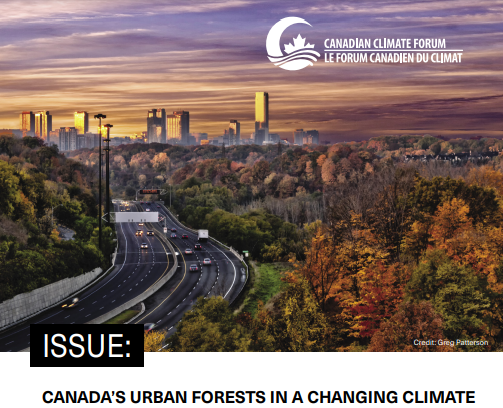Article /
Canada’s Urban Forests in a Changing Climate

Introduction
This resource was submitted by the Climate Risk Institute for use by the CanAdapt Climate Change Adaptation Community of Practice.
This article is an abridged version of the original text, which can be downloaded from the right-hand column. Please access the original text for more detail, research purposes, full references, or to quote text.
Canadians have a long and proud heritage tied to their country’s natural forests, but for the more than 80% of Canadians who live in cities, their knowledge of trees and wooded areas comes from interactions with urban forests. Urban forests have important direct effects on Canadians – they keep our homes cooler in summer, they make breathing healthier by removing pollutants from the air, provide flood and erosion control, foster community engagement and identity, and they bring the natural world into the urban environment.
Today, across Canada, the sustainability of urban forests is constantly being challenged by: air pollution; compaction of soils; restriction of root systems, invasive species; and increasingly from climate change. Climate change not only affects the health of urban forests, it also impacts their ability to blunt some of the worst effects of climate change on people. For example, trees reduce the urban heat island effect by providing shade to cool homes and the cityscape; they reduce flooding from heavy downpours by intercepting rain; and their root systems reduce soil erosion.
Just as the city’s “grey” infrastructure, like sewers, roads or bridges, needs to be maintained, so too does the “green infrastructure” – our urban forests. Adapting Canada’s urban forests to address climate change over the long term is one of the great challenges facing our urban environments.
Citation: Colombo, S. J. (2016) CANADA’S URBAN FORESTS IN A CHANGING CLIMATE.
